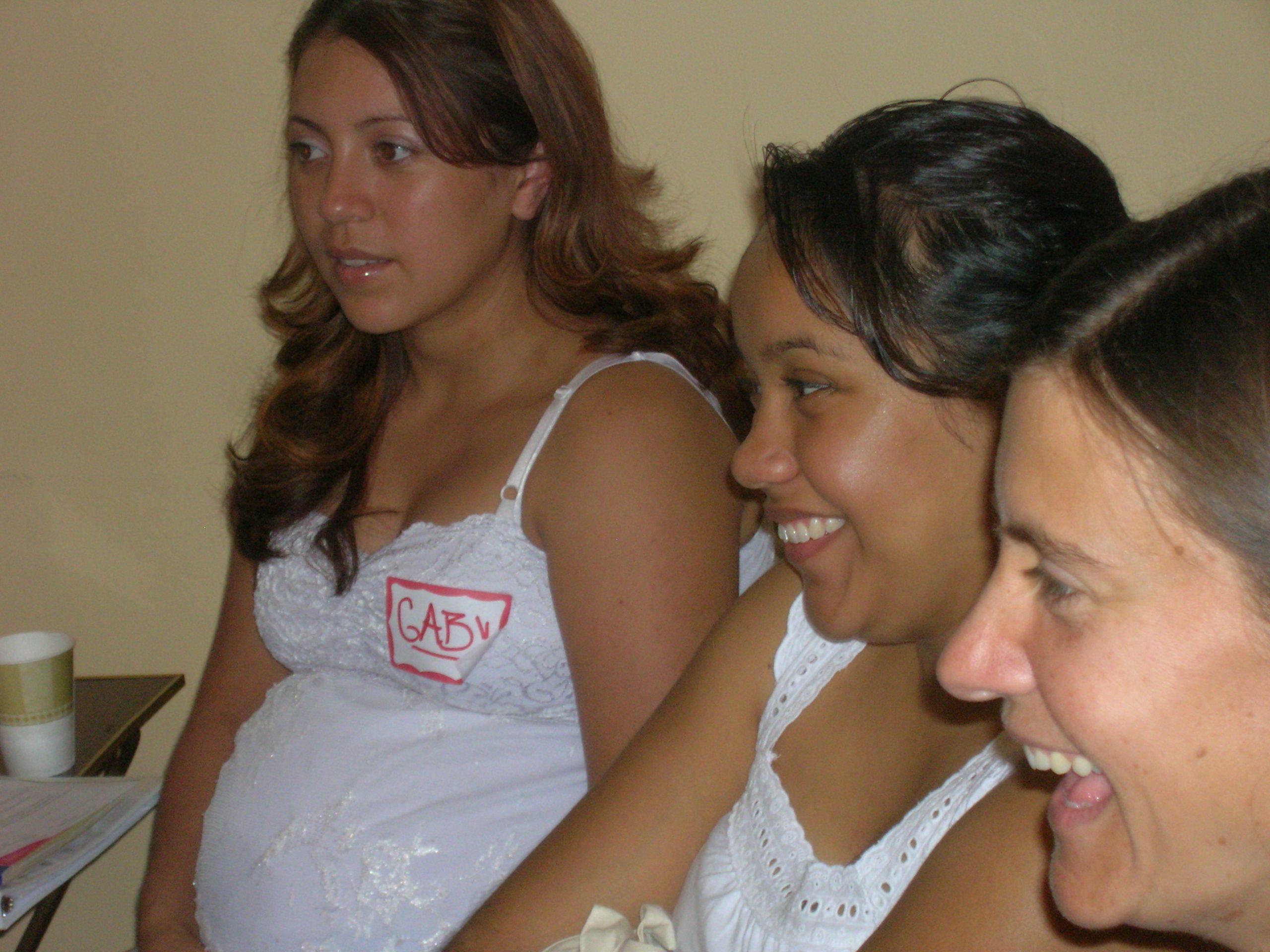By Kate Lichti
 GOSHEN, Indiana (Mennonite Church USA) — In the Gospel of Luke, when Mary visits Elizabeth, the two mothers-to-be are so filled with joy and the Holy Spirit at their meeting that Mary is emboldened to prophesy. At Maple City Health Care Center (MCHCC) in Goshen, Indiana, staff and patients are also witnessing the empowerment that can happen when women come together for prenatal care, rather than going through pregnancy in isolation.
GOSHEN, Indiana (Mennonite Church USA) — In the Gospel of Luke, when Mary visits Elizabeth, the two mothers-to-be are so filled with joy and the Holy Spirit at their meeting that Mary is emboldened to prophesy. At Maple City Health Care Center (MCHCC) in Goshen, Indiana, staff and patients are also witnessing the empowerment that can happen when women come together for prenatal care, rather than going through pregnancy in isolation.
Based on a model called “Centering Pregnancy,” out of Yale University, Maple City Health Care Center offers Pregnancy Circles to expectant mothers as an alternative to traditional one-on-one wellness visits and childbirth education curriculum.
The small groups are made up of women with relatively close due dates, and the groups meet about eight to ten times. The first half of each session includes the usual wellness checkup routine, but the second half is devoted to talking about the issues that are most on the mothers’ minds.
According to MCHCC founder and physician James Nelson Gingrich, the organization started offering these groups about 17 years ago, when they realized that their childbirth education program was primarily being used by white, upper-middle-class women. The Pregnancy Circles were born out of a desire to engage more mothers, especially the center’s many Latina clients, with a style of care that wasn’t as tied to a Western, medical model.

Women take part in the unique approach of Maple City Health Care Center’s “Pregnancy Circles” program. Photo provided.
The circle model of communication is different from most clinical settings. MCHCC nurse and pregnancy care coordinator Leah Richardson notes, “You’re not just giving the information, you’re bringing it out.”
She explains: “If somebody says, ‘I’m getting cramps in my legs,’ we (the staff) try not to just say, ‘This is why that’s happening.’ Instead we start by asking, ‘What have you heard about that? Has anyone else experienced that?’ ”
Open-ended questions allow women to express their experiences and share resources, and they can take the conversation in enlightening directions. MCHCC’s Pregnancy Circles are unique in that they are bilingual (in Spanish and English), so there are many opportunities for cross-cultural learning.
Gingrich recounts a time when a circle was discussing breastfeeding. “The staff member asked, ‘What is a reason a mother may choose not to breastfeed?’ And a mother answered, ‘If her milk is bad.’ The staff person followed up, ‘When would her milk be bad?’ and she answered, ‘Well, if she’s angry or upset.’ ”
“Moments like that re-shape the way we (as staff) view breastfeeding,” Gingrich concludes. “Rather than just viewing it medically in terms of nutrition, we learn that women are taking seriously the intimate bond between mother and baby. Then we think about how we can build on that.”
Besides better participation in prenatal care and evidence of better outcomes, Richardson and Gingrich note the ways that these circles build communities of care across differences.
“The clientele truly is very diverse,” Richardson says. “We’ve had participants from ages 16 to 43. We’ve had single moms, moms who are married, moms with a partner in jail, moms with unexpected pregnancies, first-time moms and moms with many children, moms in high school, moms who are educated, moms with other children who had previously been removed from the home and they are trying again.”
Richardson remembers a woman whose partner was in jail during her pregnancy. She often struggled with transportation, so for the last several sessions, another woman from the group would pick her up. “Offering transportation seems like a little thing, but it is really significant. Coming to the group was hugely important for this mom to get through her pregnancy on her own.”
Gingrich remembers a group that cared for a mother who experienced a stillbirth. During the last sessions, most moms have already delivered and start to bring their babies to the session with them. However, “At one of the last sessions, this mom wasn’t there, but she had given the nurse midwife permission to share what had happened. One of the women said, ‘We need to go visit her right now.’ ”
In an instance of differing cultural perceptions, the midwife worried that this would be intrusive, but one of the women said, “No, you don’t understand, we need to be there.” So they piled into a car and went. Through that insistence, says Gingrich, “The group expressed, ‘We are a community that needs to take care of each other. We don’t bear suffering alone.’ ”
Pregnancy Circles have shown so much transformative potential that the circle process model has permeated the whole organization. According to Gingrich, the board of MCHCC has adopted a model in which the first hour of meetings is devoted to a storytelling circle, and housekeeping waits until the second hour. The model has opened up new understanding among board members of different backgrounds, races and income levels.
Gingrich says, “At the heart is this notion that we create a space where everyone is heard. What’s important is that we guard the space for holy activity to happen.”
He also sees the circle model emboldening the board and staff to take steps of faith for MCHCC’s mission. “As Christians we talk about dying to the fear of death, but organizations tend to fear death. Organizational survival is not the ultimate concern here (at MCHCC). The concern is forming a thriving community, and we’ll see where that takes us.”
“Everyone feels, in moments, like they aren’t quite enough, whether it’s in giving birth, or in breastfeeding or in being a parent,” Richardson says. “My personal mission—as a nurse, as a Mennonite, as a Christian—is to encourage and empower.”
Pregnancy Circles open up communication so that the patients, as well as staff, can offer such gifts of encouragement to one another. MCHCC has found that the circle model, whether in pre-natal care or in board meetings, taps into the empowering force of community building.
# # #

